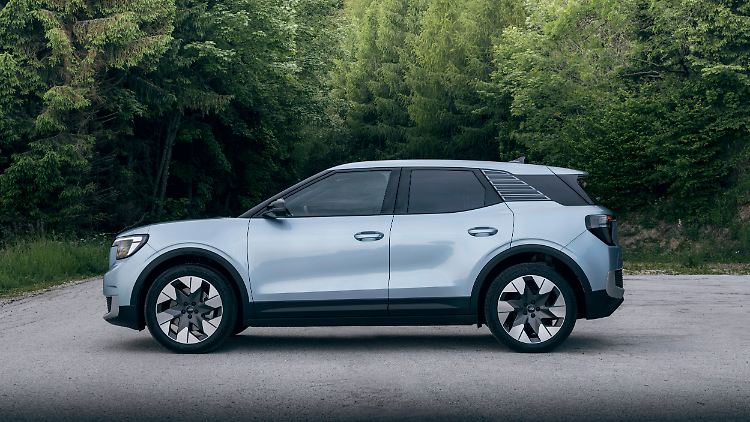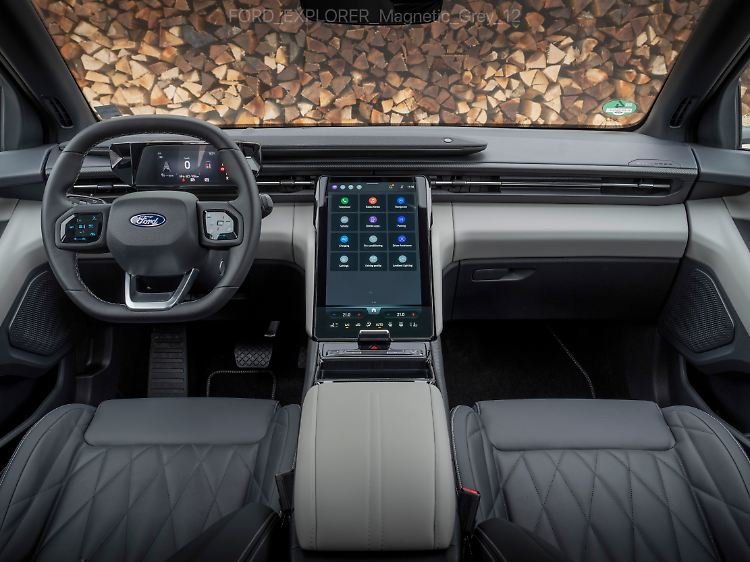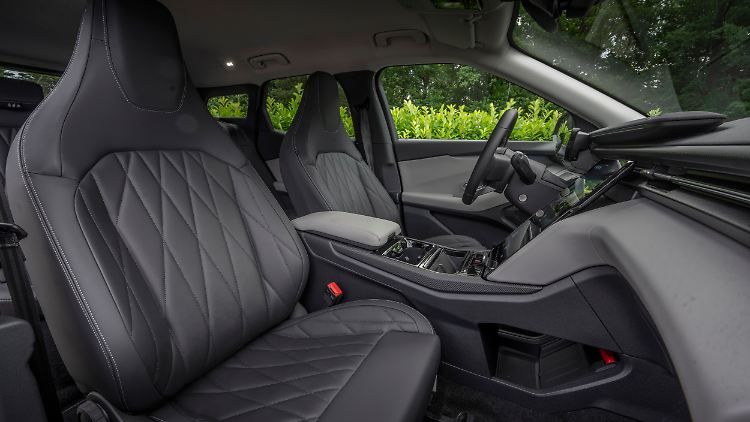ID.4 brother in driving report
Ford Explorer RWD Extended Range comes with VW technology
This audio version was artificially generated. More info | Send feedback
The Ford Explorer is back. Ford is borrowing VW technology for this. That doesn't have to be a bad thing. The Ford Explorer Extended Range RWD is something like the prettier brother of the ID.4. However, the cost pressure is also visible on it.
Ford is pushing late into the electric future, but all the more determinedly. In Europe, there will soon only be highly electrified car models. A recurring pattern is emerging in the conversion. High-volume, but less profitable models such as the Fiesta or Focus are falling victim to crossover models that promise more profit. Successful brand names from the company's history are simply being recycled. The less successful Mustang Mach-E is being joined within a short space of time by other new electric models and full hybrids. The first is the all-electric Explorer with a large battery, with prices starting at 49,500 euros.


Prices for the Ford Explorer RWD Extended Range start at just under 50,000 euros.
(Photo: Ford)
The Explorer is one of the brand's models that, since the early 1990s, have paved the way for the SUV and crossover class that is so successful today. An off-road vehicle with a box frame and four-wheel drive, with the ingredients of a luxury car mixed in. For generations, it was one of the most popular Ford models in North America. Due to its size and lack of suitable drives, however, it was never particularly successful in Europe and disappeared from the market again at the beginning of the 2000s.
Ford borrows MEB platform from Volkswagen


Instead of an expensive in-house development, Ford borrows the MEB platform from Volkswagen.
(Photo: Ford)
From now on, the new mid-range SUV from the factory in Cologne, which was converted for two billion euros, can bear this sonorous name. It has more in common with the VW ID.4 than with its namesake on the American home market. This is because Ford is dependent on external help for the labor-intensive and cost-intensive relaunch as an electric brand. Instead of an expensive in-house development, the Americans from Cologne are borrowing the MEB platform from Volkswagen. The two brands already have an intensive partnership in the commercial vehicle sector around the Ford Transit and VW Transporter or Ford Torneo and VW Caddy.
Visually, the Explorer's borrowed fatherhood is not apparent. Not only does it look more modern, but at 4.47 meters it is also shorter than the VW. This does come at the expense of the trunk, but it also positions the Ford half a segment below. It is available with rear-wheel drive or two-motor all-wheel drive. At launch, all versions will be offered as an extended range, either with rear-wheel drive and a 77 kWh battery or with two-motor all-wheel drive and a slightly larger 79 kWh battery. At the end of the year, a slimmer standard range version with 52 kWh will round off the drive range.
Range up to 602 kilometers


Ford is on its way to becoming an electric brand, but retains much of the old spirit.
(Photo: Ford)
The single-engine Extended Range has a 210 kW/286 hp engine, which in combination with the battery should provide a range of up to 602 kilometers. In the higher equipment variant, the range is reduced by 30 kilometers, while in the variants with all-wheel drive it is around 40 km lower. During our test drive with the Extended Range RWD, we achieved a consumption of around 18 kWh, which corresponds to a real range of almost 430 kilometers. The variant with all-wheel drive can be charged from 10 to 80 percent in 26 minutes with a decent output of 185 kW, while the RWD charges at a more average 135 kW at peak and takes around 28 minutes from 10 to 80 percent. At home, it takes just over seven hours to fully charge on an 11 kW charger.
With the new Explorer, Ford is living up to its reputation for building cars with agile chassis. The technical changes compared to the Volkswagen ID.4 mainly affect the suspension, the dampers and the electronics. It is still a mid-range SUV, but it drives very balanced and quietly, with minimal rolling, rolling or wind noise. In the city, it moves quickly and has a small turning circle, which means it can also master tight maneuvers. One of the few points of criticism is that the steering feels a bit light. On winding country roads and in the city, it is also a shame that there is no full one-pedal driving mode, but only a relatively weak recuperation level.
Not much space either front or back


The central touchscreen in the Ford Explorer is 15 inches.
(Photo: Ford)
The space in the interior is not particularly generous for an EV, either in the front or in the back. The central touchscreen is what draws attention. At almost 15 inches, it dominates the center console, can be tilted manually and provides additional, lockable storage space. The screen resolution is excellent and the graphics are clear, but it is not easy to use due to the small icons. The rest of the interior feels similar to the VW models: sufficiently comfortable, but very sober and with obvious pressure to save on materials and workmanship. One of the nice new features is the ability to create smaller interior elements on a 3D printer. Instead of the cup holder, Ford makes the print files for multi-purpose use or storage boxes available online free of charge.


There isn't much space in the Ford Explorer – at least for an EV.
(Photo: Ford)
Standard equipment includes a heated steering wheel and front seats, two-zone automatic climate control and massage and memory functions for the 12-way adjustable driver's seat. Apple CarPlay and Android Auto are also on board. A large number of sensors and cameras provide the basis for a range of assistance systems. Options include a head-up display, a 360-degree camera, a lane change assistant and a lane keeping assistant. An energy-saving heat pump for air conditioning and heating is also available at an additional cost.
Ford is on its way to becoming an electric brand. It has retained much of its old spirit. The Explorer offers a high level of driving dynamics and combines this with a sober but functional interior. It also looks better than its platform siblings at VW and, thanks to its good equipment, it is also competitively priced.
Technical data – Ford Explorer Extended Range RWD
- Electric mid-size SUV with five seats
- Length: 4.47 meters, width with exterior mirrors 2.06 meters (with exterior mirrors folded in: 1.95 meters), height: 1.63 meters, wheelbase 2.68 meters, trunk volume: 427-1422 liters
- Electric motor, 210 kW/286 hp, maximum torque 545 Nm, battery with 77 kWh, range according to WLTP: 555 km, one-speed automatic, rear-wheel drive, top speed 180 km/h, 0-100 km/h: 6.4 s, charging power: DC up to 135 kW (from 10 to 80 percent in 28 min), AC up to 11 kW (5 hours 21 min), WLTP standard consumption: 15.1-13.9 kWh/100 km, CO2 emissions: 0 g/km
- Price: from 49,500 euros































